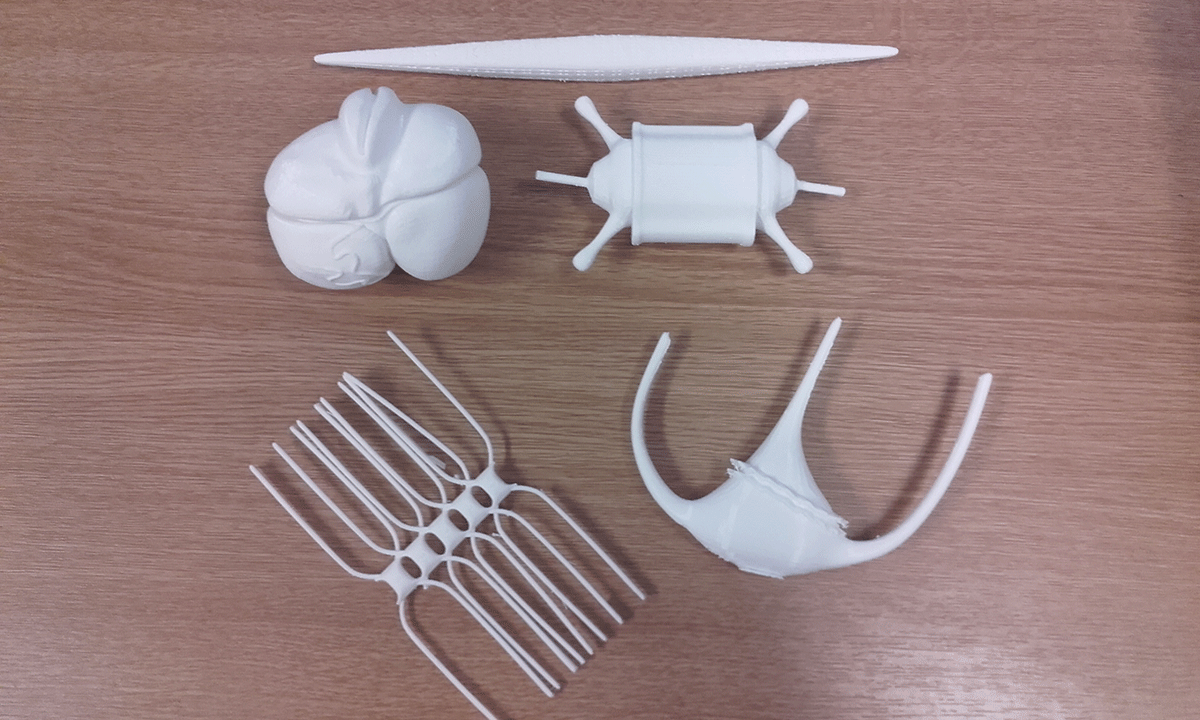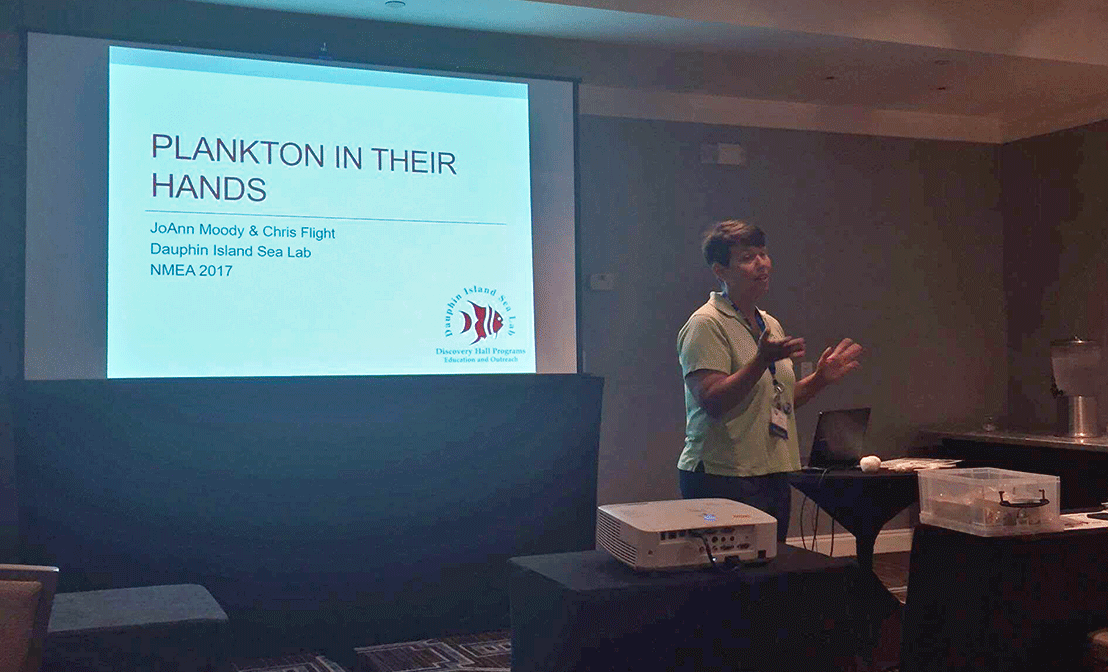
There are several marine plants and animals in the world that are critically important in our ocean, but are so small that they cannot be seen with the naked eye. Phytoplankton, microscopic organisms that carry out much of the photosynthesis in ocean ecosystems, are one of these groups. Researchers and educators at the Dauphin Island Sea Lab collaborated on a project to help students understand these organisms by putting 3D printed models of phytoplankton into their hands.
DISL's phytoplankton ecologist Dr. Krause and Discovery Hall Programs Chair Dr. Tina Miller-Way collaborated on the project.
In 2015, Dr. Krause supported the development of 3D models of several common Gulf of Mexico phytoplankton by Adam Nienow of Marine Microalgae Research Associates LLC with funds from a National Science Foundation grant (OCE 1155663). The models were based on photos that were taken with an electron microscope provided by Dr. James Nienow of Valdosta State University and other public domain sources, such as the Florida Fish and Wildlife Conservation Commission.
Models include the diatoms Odontella, Chaetoceros, and Pseudo-nitzschia, and the dinoflagellates Ceratium and Karenia brevis which is the species responsible for red tides in our area.
“One of our hands-on classes for K-12 students focuses on plankton. Students take plankton samples from our local waters and view them under the microscope, but it is difficult to convey their structure and their beauty with our student microscopes. Having these models, hundreds of times larger than life, allows us to communicate this in a more tangible way,” said Dr. Miller-Way.

Because the models are externally anatomically accurate, students can see the structure of the model, and then compare the model to the plankton viewed under a microscope.
Dr. Miller-Way adds, “We have also used the models with a group of visually impaired students, and it was fascinating and gratifying. As I felt the models really helped them understand what was being said.”
“The most exciting part of using these models has been seeing the creative ways people use them," Dr. Krause said. "Tina’s group, especially JoAnn Moody, have done wonderful outreach with these models. It is satisfying to see these educational tools in the hands of creative people, in the USA and abroad, who care about outreach."
This past summer, DISL Discovery Hall Programs educator JoAnn Moody presented the models at the National Marine Educators Association conference in Charleston, South Carolina this past summer.
"It was a wonderful opportunity to share hands-on activities from our department with a national audience," Moody said. "Dr. Krause’s 3D plankton models have been a great asset to our department, and I was happy to share those along with the plankton posters created by Rachel McDonald and Tina Miller-Way to show what successful research/education collaborations produce here at DISL."
The Delaware Sea Grant College Program picked up on the models during JoAnn’s presentation at the NMEA Conference.
"I've seen our 3D printers used for all sorts of research application, but this is the first time, that I know of, that they were used for education and outreach," Delaware Sea Grant Marine Education Specialist Christopher Petrone shared. "These models have left a major mark on plankton education and outreach."
Petrone and his team posted a video of the phytoplankton models being created with their 3D printer on their Facebook page. It was a hit among the page's followers.
The models have also been printed and showcased by the Canadian Museum of Nature in Ottawa, Florida Polytechnic University, and, most recently, the Scotland Marine Laboratory.
The models can be found on Dr. Jeffrey Krause's website. Adaptations of these original models are also freely available at thingiverse.com.